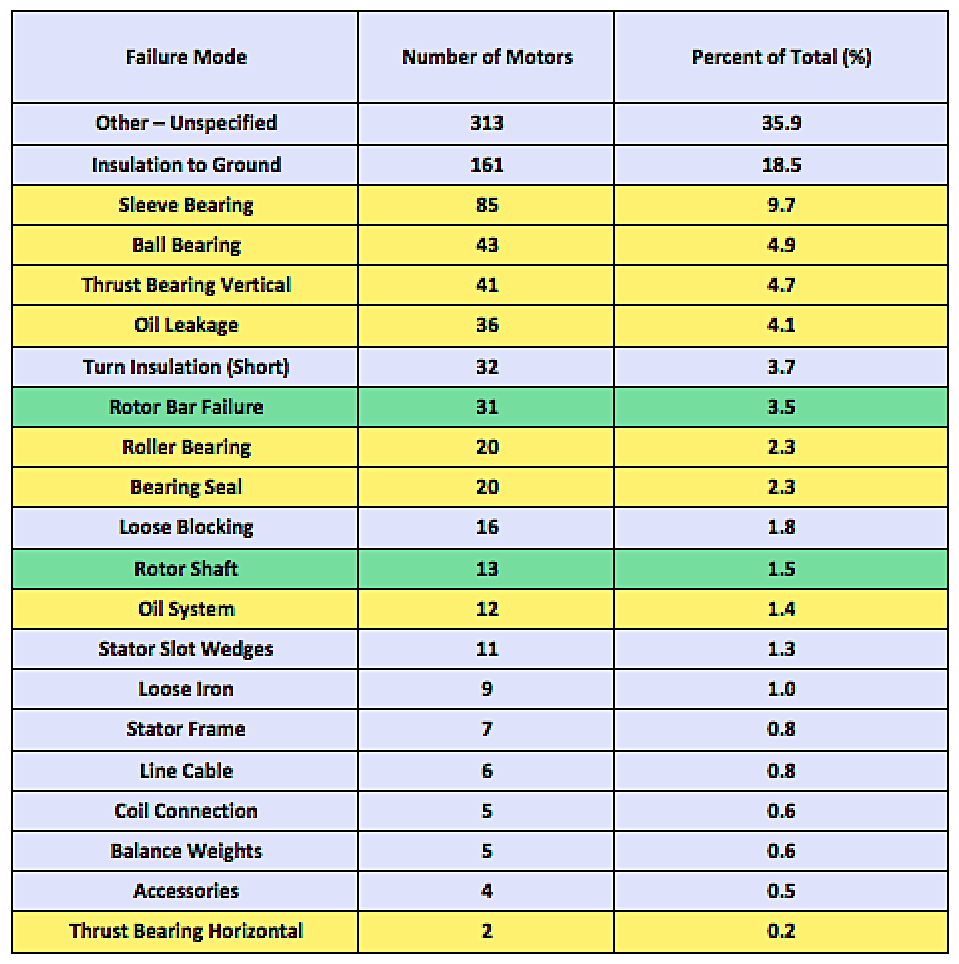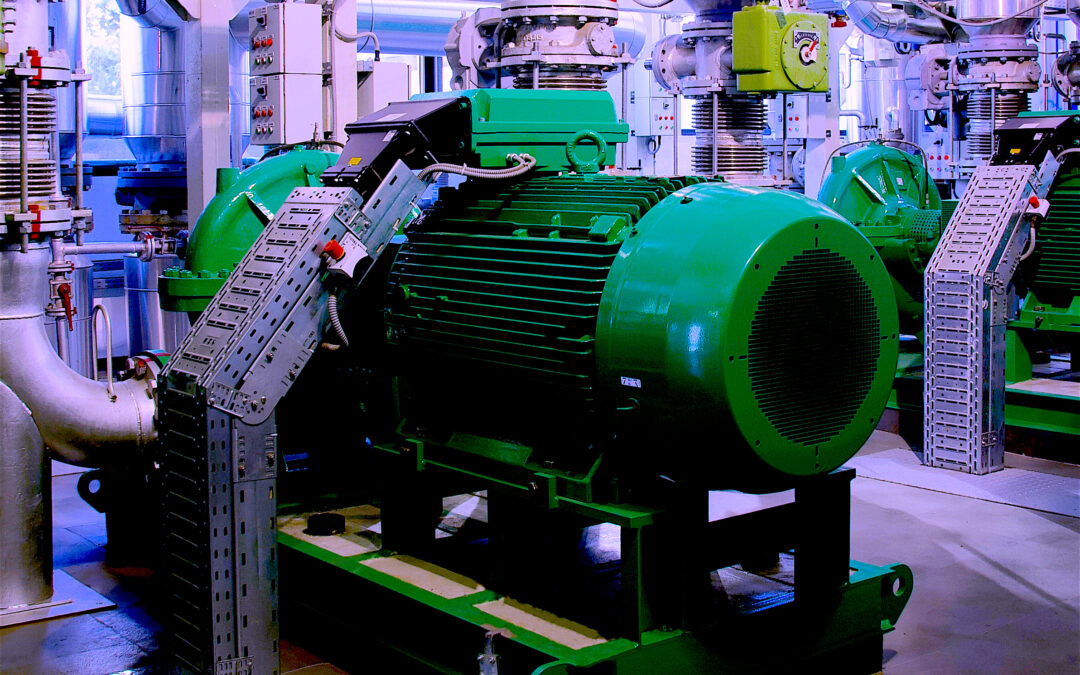This article is the latest installment of a multi-part discussion on research conducted by EPRI (Electric Power Research Institute) and IEEE (Institute of Electrical and Electronics Engineers). As we dig deeper into those studies, some intriguing patterns begin to emerge. Several other things begin to stand out as well.
The first pattern is that small defects and tolerances tend to have an impact on the reliability of your electric machine. The second is that our perception of component failure may be significantly skewed, primarily through programming. It is interesting to note that this type of programming is studied by a relatively new, but growing discipline called engineering psychology that focuses on the perceptions surrounding human-machine interfaces. In simple terms, we have been ‘programmed’ to view electric machinery conditions a certain way through articles, general media, education, and vendor advertising.
When reviewing findings from IEEE’s 1985 failure study (Table I) that was noted in my “Comparing What The Studies Said” article of April 12, 2020, the part of the data related to bearings really begins to stand out. The research identified the repairs that were performed, but NOT whether these repairs were a result of failure or standard industry practice.
For example, the 5% of rotor failures included 3.5% for rotor bars and 1.5% for shaft failures. This becomes an issue given the fact that many vendors and articles claim that it’s 5%, or normally quote the 1983 EPRI study at 10% rotor-bar failures. The 3.5% percent of failures in the study were found in copper and aluminum alloy bar rotors in large motors and did not include casting voids in cast aluminum, low-voltage motor, i.e., under 600 Volts. Yet, information continues to be disseminated in various printed materials, presentations, and technical articles about casting-void issues as a fault, without identifying any impact on performance or reliability.

Table I. Component Findings from the 1985 IEEE Study (Green – Rotor, Yellow – Bearings)
An internal automotive-facility study of repair work revealed that an average of 20% to 24% of electric motors sent out for repair (depending on type of facility) received a response of “no problem found.” The motors included in the study involved a population of low-voltage units of a similar size as the 1985 study. Another look at Table I identifies, first, that 35.9% of faults were not specified or reported, dropping the confidence level of the study significantly. One of the items of note is that the bearing issues made up only 29.6% of all findings and included oil and bearing seals. The numbers in the graphs that were used don’t show the 35.9%, but also skew the remaining data.
Looking at ball and roller bearings, the majority of which were in smaller motors, we see they make up 4.9% and 2.3% of replacement (or total of 7.2%). Industry-standard repair practices tend to replace ball and roller bearings after they’ve been removed in the repair process. This means that possibly 20% of those bearings were replaced, despite not having defects, and that the remaining bearings also might not have been defective. This situation had been quite prevalent. In fact, during a study of site inspections at automotive facilities, some repair shops were found to have been test-running motors, and if faults weren’t detected, they would simply paint the motors and return them to customers with an overhauled or rewound invoice. None of these studies, however, identified the causes of failure or assumed failures of motors that were repaired or replaced.
The graphs presented in the referenced IEEE motor study also take the data out of context. The end result is a focus on specific types of conditions for continuous monitoring and analytics that don’t match the more serious, higher outage-time faults.
In the next part of this series, we will take a closer look at correct identification of the types of issues that a site could run into with regard to electric machines, and discuss new study published on machines that were thought to have an extreme number of bearing failures.TRR
Click The Following Links For Previous Articles In This Series on The Reliability Of Large Electric Motors
March 28, 2020: “What The Studies Really Said”
April 12, 2020: “Comparing What The Studies Said”
April 18, 2020: “How The Studies Applied to Larger Motors”
ABOUT THE AUTHOR
Howard Penrose, Ph.D., CMRP, is Founder and President of Motor Doc LLC, Lombard, IL and, among other things, a Past Chair of the Society for Reliability and Maintenance Professionals, Atlanta (smrp.org). Email him at howard@motordoc.com, or info@motordoc.com, and/or visit motordoc.com.



